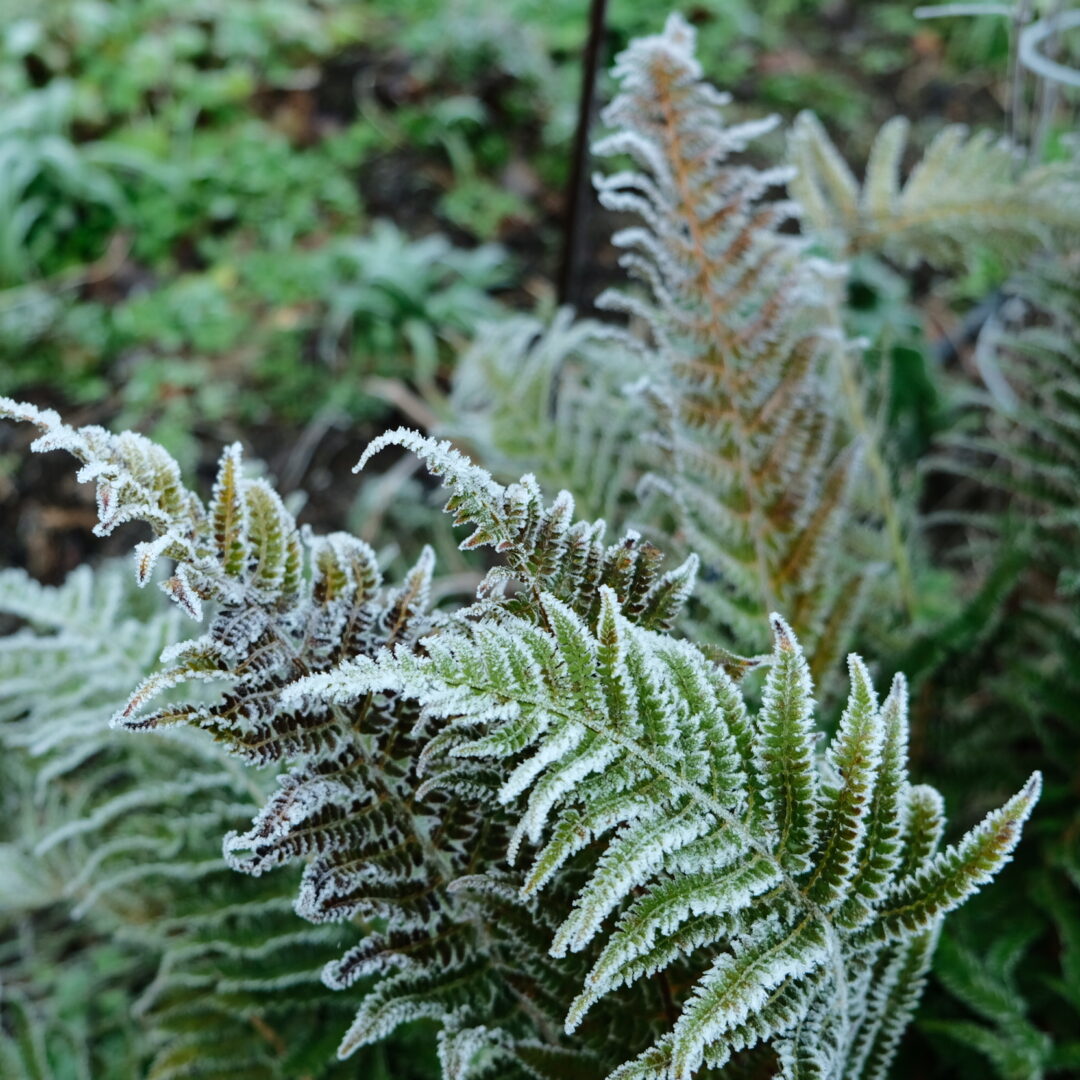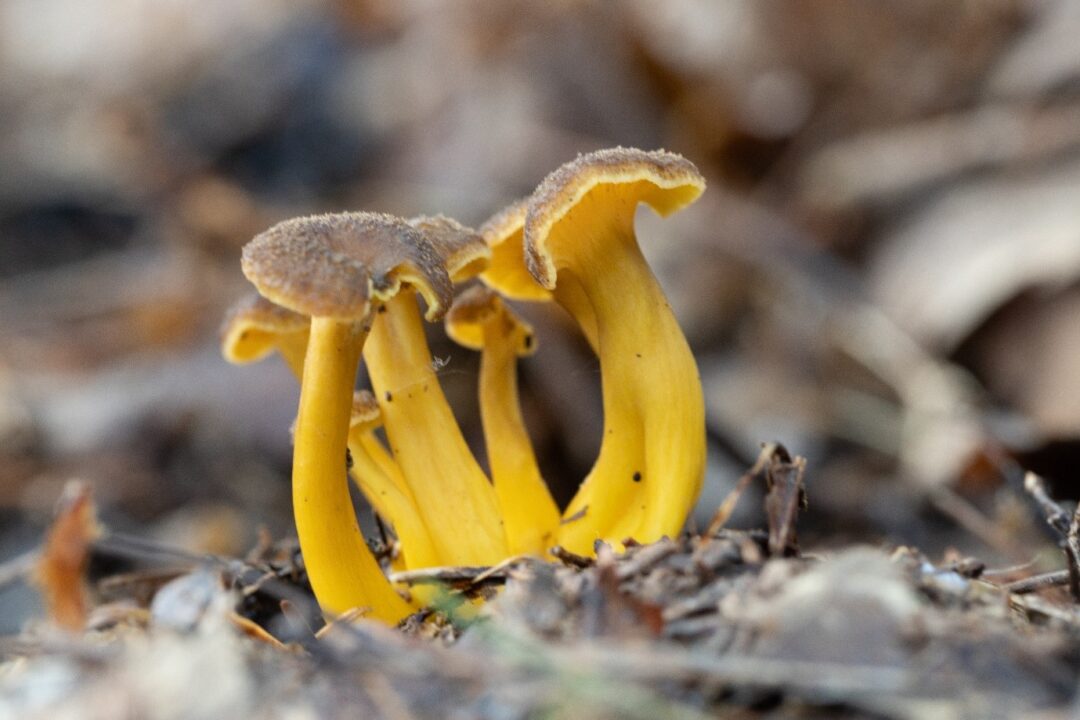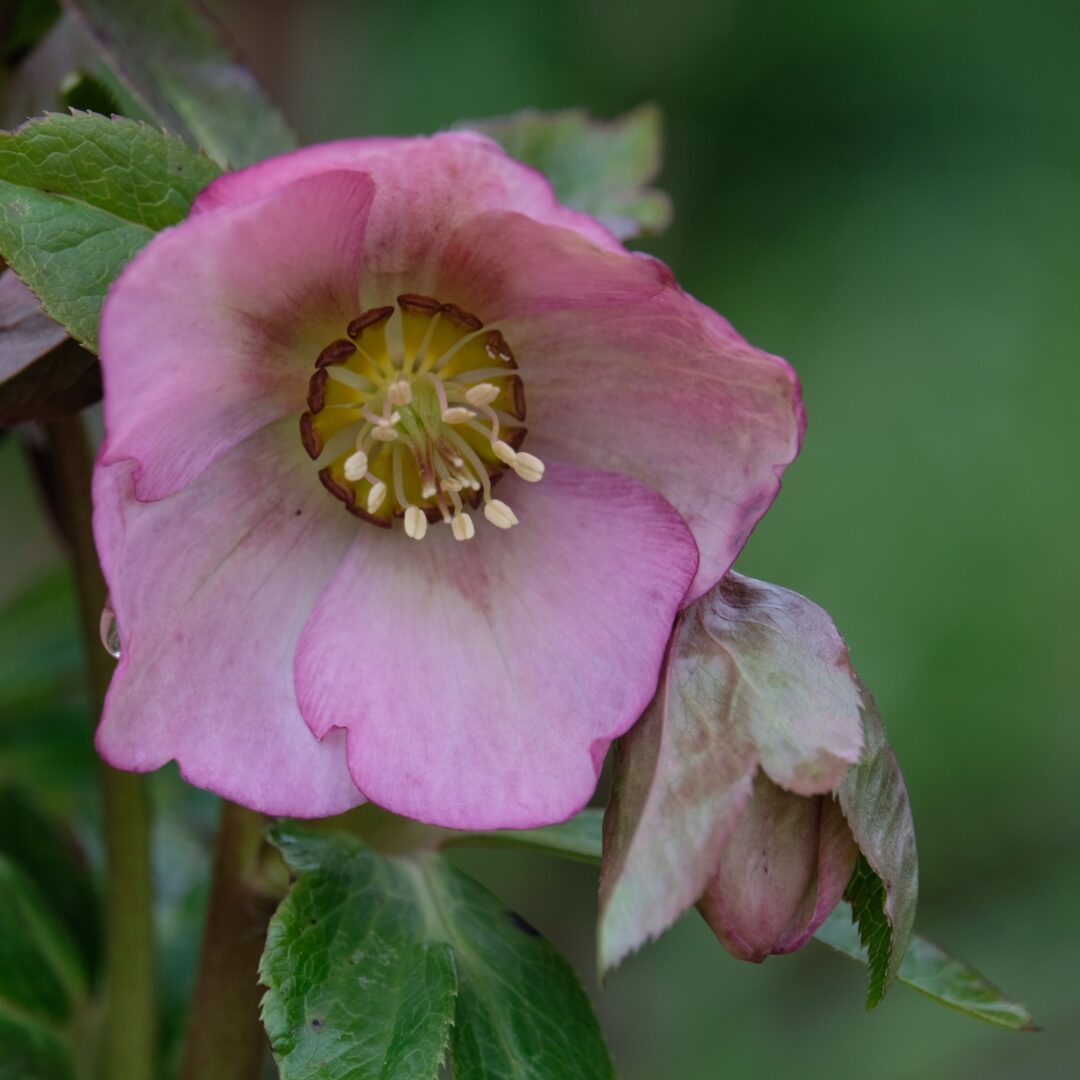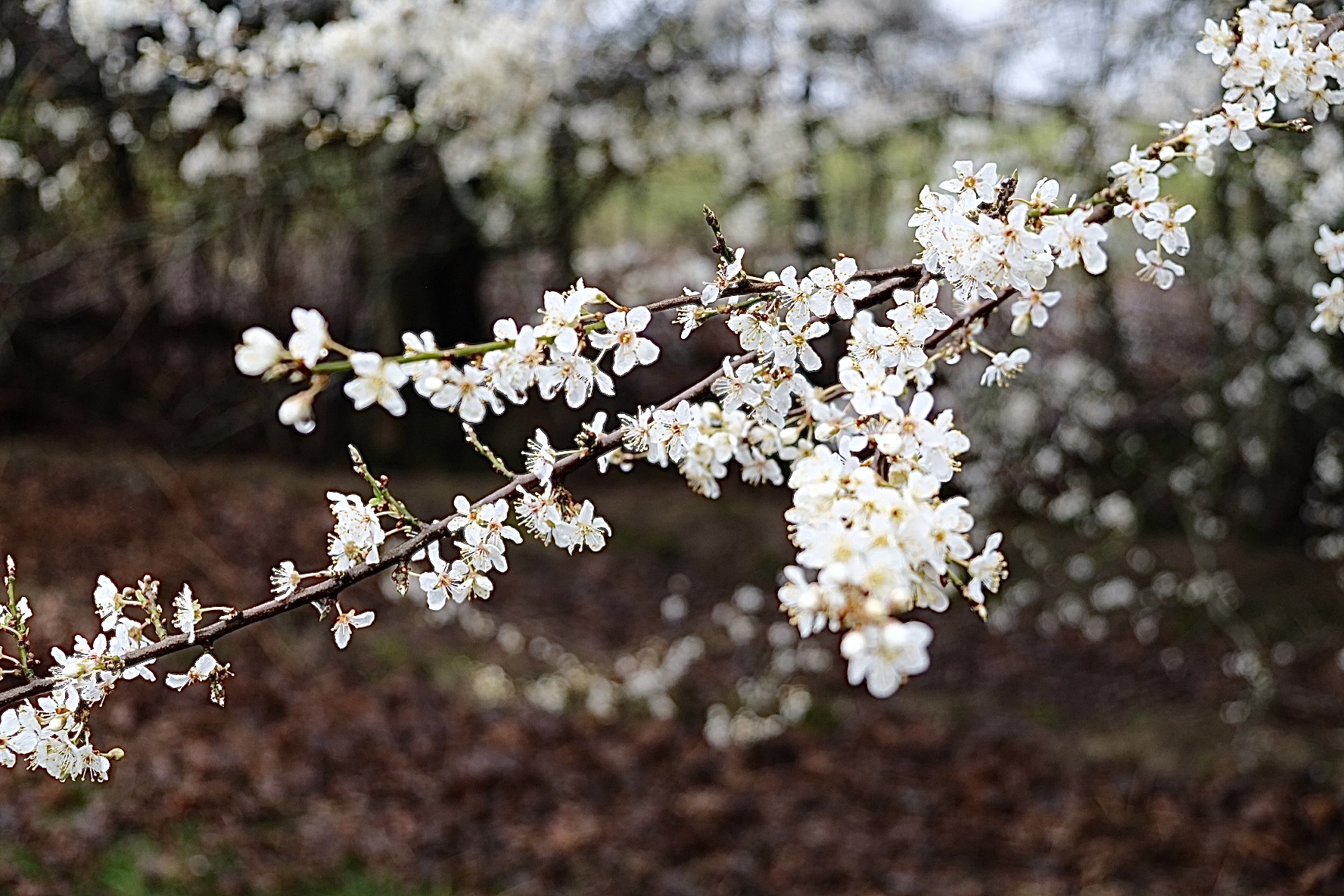
At the beginning of this month the hedges and copses start to burst into blossom with the wonderful Cherry Plum, Prunus cerasifera. It is one of the first trees to blossom in gardens and hedgerows. There is a particular tree that I pass every day that is first to blossom and is utterly beautiful with its delicate flowers set against the, usually, wet dark branch. It means spring is on the way.
The cherry plum is an ancestor of the domestic plum and its fruits can be made into wine or jam. It is very beneficial to insects.
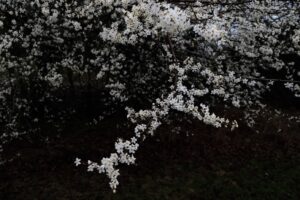
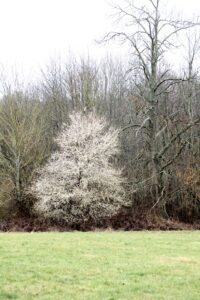
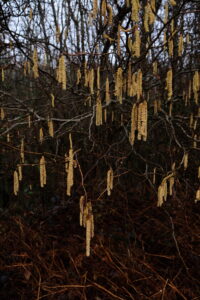
The catkins have been in evidence since early January. Hazel catkins appear from January to March. The Woodland Trust notes that ‘Catkins flowering is one of 69 wildlife events our amazing volunteers record for Nature’s Calendar. This project tracks the effects of weather and climate change on wildlife across the UK – its records date all the way back to 1736!’ Although this blog has missed the opportunity for alerting you to this activity, it is not too late to alert readers to silver birch and pedunculate oak tree catkins which are also recorded for Nature’s Calendar.
In the garden the Lonicera fragrantissima is leafing up and the last flowers are clinging on. This amazing plant flowers from December to March and throughout the long dark days of winter it is full of life. On fair days solitary bees and insects feast on the flowers, and small birds peck at the abundant flowers for the nectar. This plant has a heavenly perfume that is particularly strong on frosty nights. It is well worth going out on a clear night and standing next to the plant whilst looking at the stars.
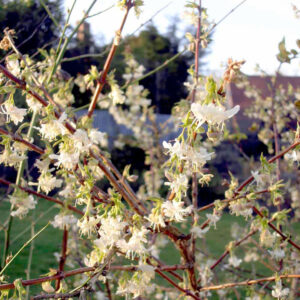
Another fragrant winter delight is Daphne bholua ‘Jacqueline Postill’ that is steadily taking over a sheltered corner in the garden in spite of the often waterlogged clay soil. Throughout the winter it has bloomed and been attended by bees.
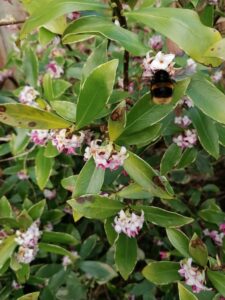
In late February I paid a visit to Great Dixter to see the gardens, it was a great treat. I had planted a few Narcissus Bulbocodium ‘Spoirot’ and was delighted to see these hoop petticoat daffodils here as well as the meadow of crocuses.
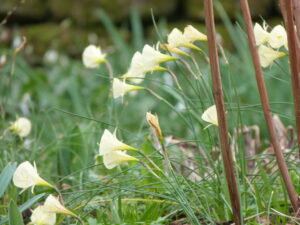
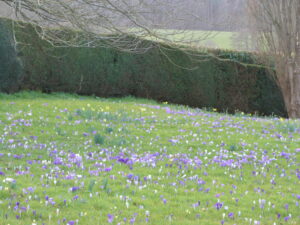
Historical Gardens – Monastic Gardens
Monastic gardens fed the monastery community but also contained plants that would be used for medicinal purposes and for the purpose of dyeing. St Augustine’s Abbey and Christchurch held lands locally and there were Carmelite monks at Lossenham near Newenden.
There is a ninth century plan for a monastery which was preserved at the abbey of St Gall in Switzerland. It is probable that the monastery was not built but it does contain a plan for gardens. These gardens cover about three acres. Next to the physician’s house is the walled physic garden and close to that is the cemetery which contains and orchard and nuttery. South of the graveyard is the vegetable garden with raised beds and pathways to kneel in when tending the garden.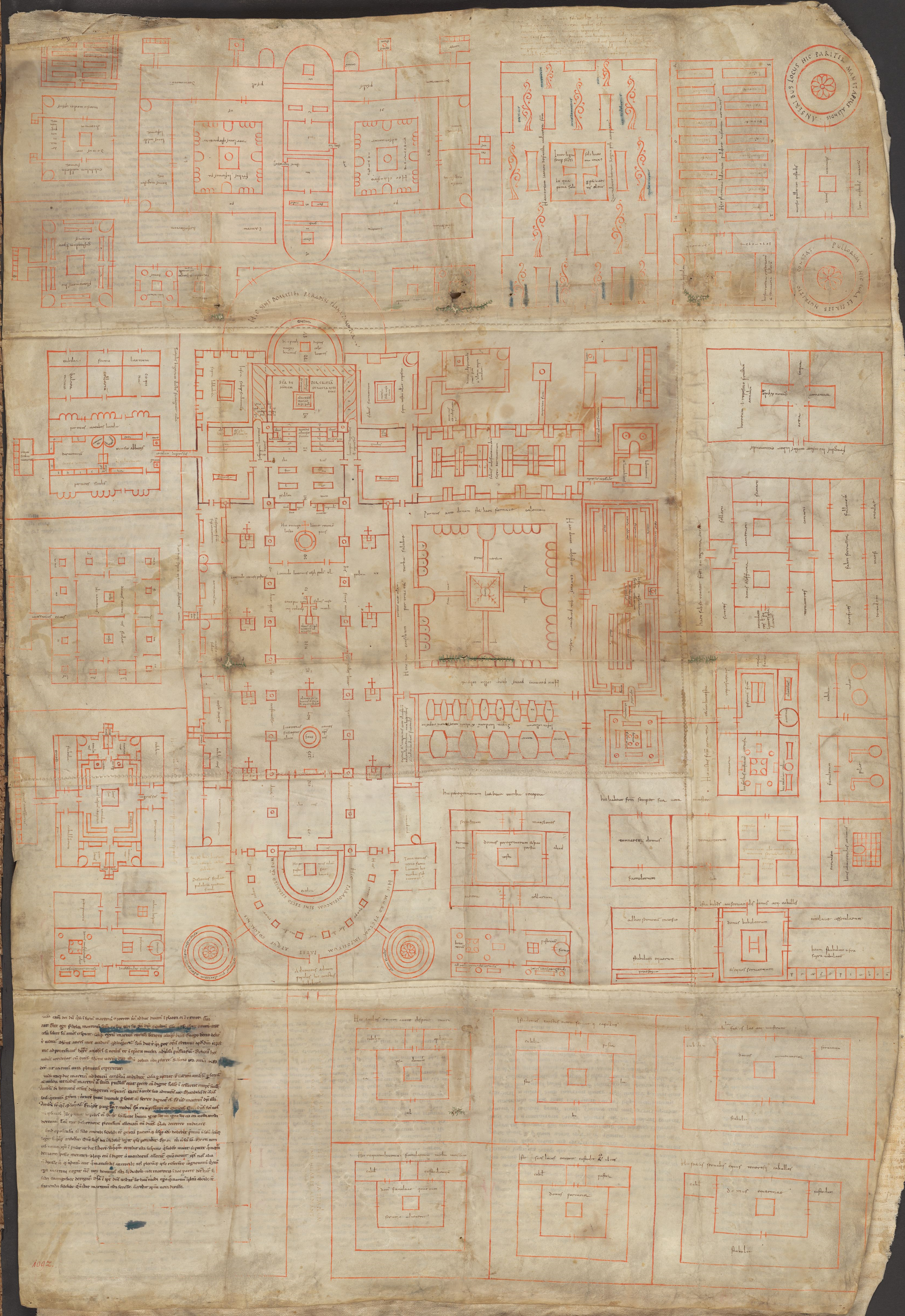
The plants in the plan are labelled onion, garlic, leek, shallots, celery, parsley, coriander, chervil, dill, lettuce, poppy, pepperwort, radish, parsnip, cabbage, chard and fennel. As the community would probably number over two hundred, these beds would not have supplied sufficient food. There would have been more vegetables grown and these would probably have been tended by labourers from local villages owned by the monastery and supervised by a gardener. Crops grown there would probably have been beans, peas, cabbages and leeks.
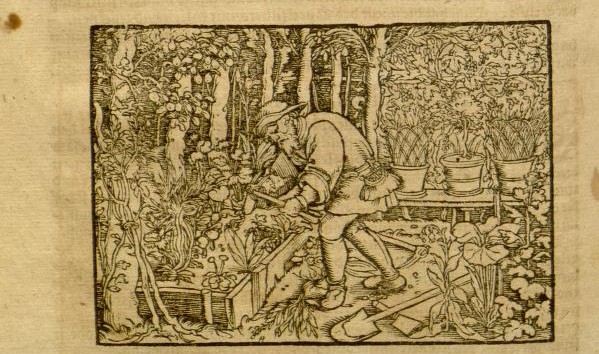
This is an illustration from a sixteenth century book (Kreuterbuch, von naturlichem Nutz, und gruntlichem Gebrauch der Kreutter, 1550 the Wellcome Collection) and is said to depict a man working in a monastic garden.
There is an area for drying fruit shown in the plan and a variety of trees is listed for the orchard: apple, pear, plum, mistletoe, laurel, chestnut, fig, quince, peach, hazelnut, almond, mulberry and walnut. Another list of trees suggests that different types of tree should be grown so that early crops, late crops, types that need to be eaten straight away and types that are good for storing would be included. Cherries, medlars and pines were also mentioned.


